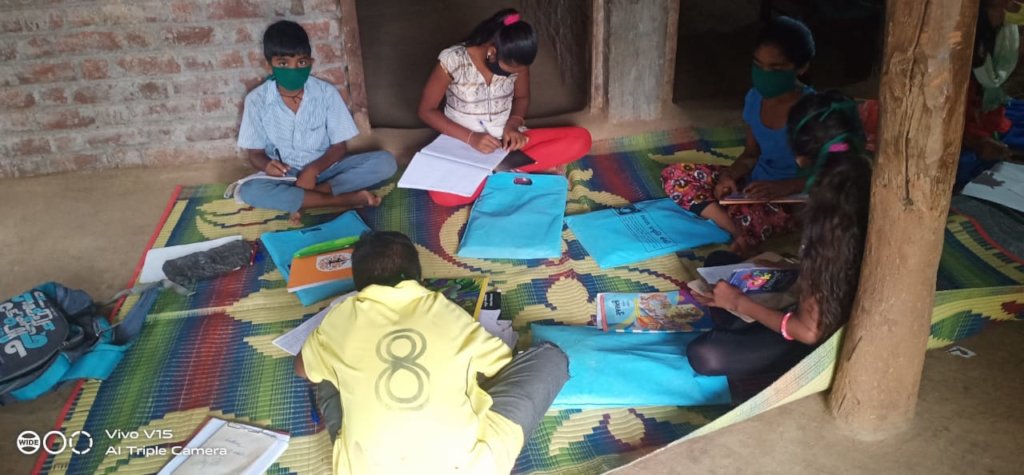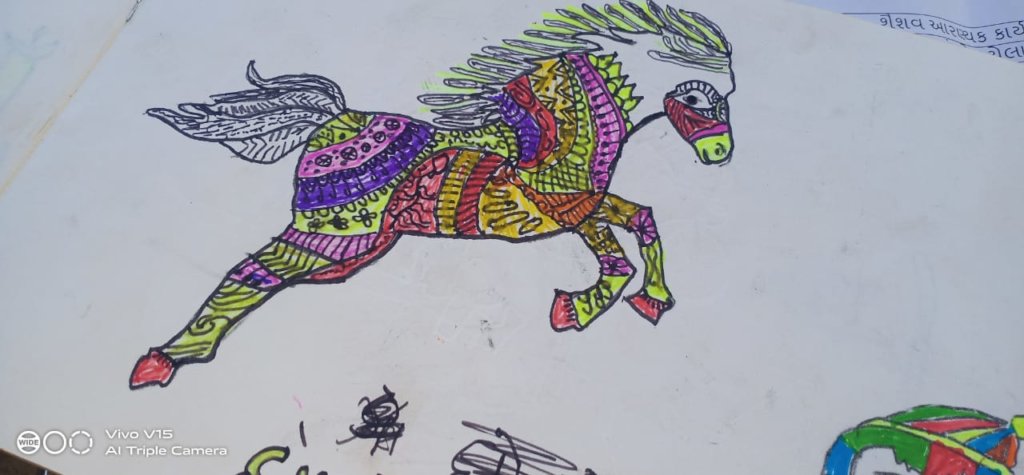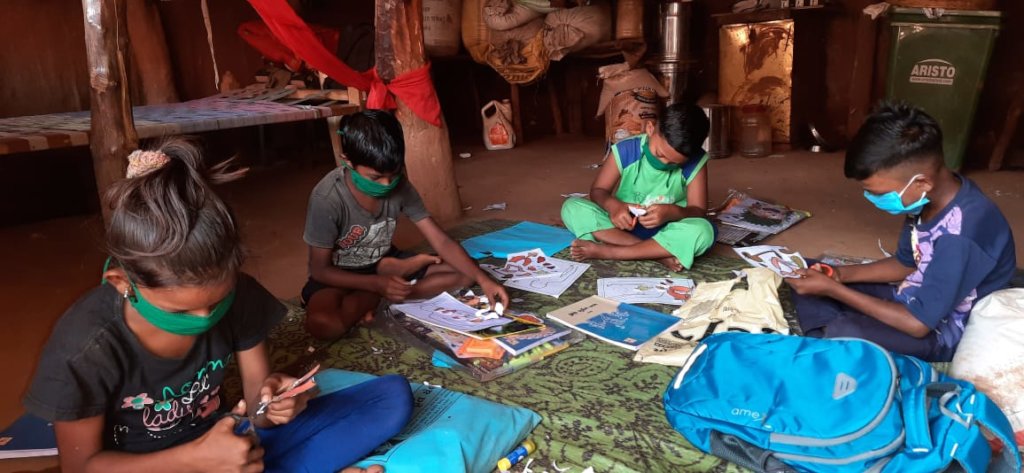By Evita Pinto | Project Consultant
Introduction: The Pandemic has affected lives and livelihood all over the world. India, in its efforts to contain the spread of the virus on March 22nd, the Prime Minister ordered a lockdown. It’s been 8 months since India is still battling with the Pandemic and is the 2nd worst affected country in the World.
In Bhavnagar, Shaishav being involved in training children in Child Rights, Child safety and prevention of Child Labour among the most marginalized section who faced huge challenges during the Pandemic. Financially, the families experienced a crisis due to job losses. The Pandemic has caused high mortality rates which led to social, mental and physical stress.
The people were confined to their homes with monotonous / no activity which gives a sense of being trapped. Although homes may be considered as a safe place for some, it is not the safest place for all. In-fact with Covid-19 lockdown, there has been a hike in cases of domestic violence, child labour and other forms of violence. Children too have increased vulnerability to domestic violence during this time. Increased job insecurity, financial worry and other such emotions of parents can be a predictor of abuse.
Lockdown and its impact on education:
Reducing physical contact has been the most common strategy adopted by the government to contain the spread of Covid-19. It has led most countries around the world to close down their schools for long periods of time. Covid-19 struck us without warning and left the education system scrambling, children were affected as the entire system came to a standstill. Knowing that this deadly virus wouldn’t leave so soon, the education system decided to move to the so-called “digital world” which led to online teaching, exams, lectures etc.
The world of online education basically meant having sophisticated phones/laptops, strong networks etc. India, having caste and class dynamics, not everyone has access to smartphones. Lack of access to the internet and devices has created a gap in digital literacy, and to worsen the situation, India faces frequent power cuts, when compared to face-face education, online education brings forth significant deficiencies such as absence of opportunities of collaborative learning, lack of human connection and teacher’s supervision. Our Education system is forcing children to do rot learning instead of learning through concept clarity. Children are never taught “How to Learn” so they always remain dependent on schools, teachers, books for learning rather than learning independently.
Throughout the lockdown, Shaishav team members ensured that the children and their families had support through home visits and phone calls. At any time, be it day or night, the Childline team reached out to those facing any distress. The commitment and dedication of the team members in delivering their services was not time-bound because Childline works round the clock. For Shaishav, “Sky is the Limit”.
Training of Trainers:
Shaishav team attending various training session online which could help them and broaden their idea on the development of activities. Various activities were taught to the team which could help the, develop the Activity Resource kits.
Manish Freeman was one among the trainers who had innovative ideas about the activities which would benefit the child in their learning as well as keep them engaged.
In the absence of “formal Schooling”, The Child Rights training & Resource Centre team, along with other team members brainstormed on the idea of “learning through activity”. Thus, activity resource kits were prepared which aimed at engaging children between the age group of 8-18 with games which would enhance their knowledge.
The activity kit which was distributed to its beneficiaries. The team would go twice a week on field to conduct and train children on how to use the Activity Resource kit. If children are unable to follow the game, the facilitators teach 1 activity per week in the community.
AARANYAK
Lockdown has become a new normal in our lives. At Narmada, due to lockdown, schools were shut, home quarantined was imposed which didn’t allow the facilitators to go on field and work. The child would wait anxiously for the facilitators to come. In fact the children would go to the facilitators house and call them and have some activities. Aaranyak being so committed to their work, they began going on field after a month taking all the precaution and physical distancing.
The team recreated the “fun games” into “learning tools”. Concepts of child rights, family/individual values, decision making, confidence/capacity building, secularism were innovatively designed into these games. One such example is “snakes & ladders”, in which each step taught the children about their rights and exploitation against these rights.
A Manual was prepared as a guide to direct children about the games and a wealth of information based on the themes. The first and the last page of the manual, covered all rights that the child is entitled to. The stationary required for the games was also provided to the children.
The Activity Resource Kit was prepared after rigorous reading from various books, in order to get information. The activities were recreated in an interesting manner that would grab the attention of the children to learn through the play way method. The kit was designed in a manner that could involve the siblings, parents, friends and relatives to play along.
Around 315 kits were distributed to its beneficiaries.
Alpesh Bhai conducted training with the Aaranyak trainers about scientific activities with easily available material from home. Activities like, dancing candle by using thread and coin, glass and paper etc. He also trained on how to create various resource material represented pictorially.
Aayanyak team have a meeting on every Saturdays and plan for the entire week. 1 activity is taught per week from the activity resource kit to a small group which covers all the community adopted by Shaishav. The children very happy with the kit because it helped them expand their creativity beyond horizon, learnt about child rights and many more topics. The parents also appreciated the work done by Shaishav. The parents also used to get involved when the facilitators would come to the field and teach the children.
On 10th November, Parulben, Falgun Bhai and Ishaben Visited the field. They interacted with the children and parents and took a feedback about the Activity Resource kits.
Parulben also conducted few activities and created awareness about the Corona Virus, its impact and how to take safety precautions which ensured the safety of its beneficiaries.
Baldost:
Aaranyak team formed Baldost committee. These Baldost would ensure that the child was not prey to violence, abuse, exploitation, child labour etc. If Found, the Baldost would report immediately to Aaranyak team who would then refer the case to childline team for further interventions. Baldost committee will further be worked upon with appropriate training and policies. Frequent meetings will be held to strengthen the team.
Survey:
Aaranyak team conducted a survey in order to understand the background of the children. Based on this survey, the team will plan for further intervention at Narmada. Accordingly, Shaishav will develop resource materials, activities etc to resolve the issue and help bring change in the community.
The team developed tools to understand the magnitude of the problem;
Place: Single parents Orphan Child Labour Sickle cell
1) Pomlapada 3 3 8 2
2) Shajepur 3 0 1 0
3) Thappavi 5 0 1 1
At Thappavi, 1 child had vision problem (white spot in 1 eye)
4) Samarpada 0 2 1 0
(Navivasahat)
5) Samarpada 9 0 4 2
(Junivasahat)
The information obtained from the survey will be analysed and further intervention will be planned. Along with this data, the team also obtained information on the living situation of this community.
Shaishav intends to initiate an innovative yet sustainable model of education for tribal and
other children through a learning and living space at “Aaranyak.” At the same time, ensuring that the children who are facing extreme issues, are given importance and resolved through quick interventions.
Project reports on GlobalGiving are posted directly to globalgiving.org by Project Leaders as they are completed, generally every 3-4 months. To protect the integrity of these documents, GlobalGiving does not alter them; therefore you may find some language or formatting issues.
If you donate to this project or have donated to this project, you can receive an email when this project posts a report. You can also subscribe for reports without donating.
Support this important cause by creating a personalized fundraising page.
Start a Fundraiser

